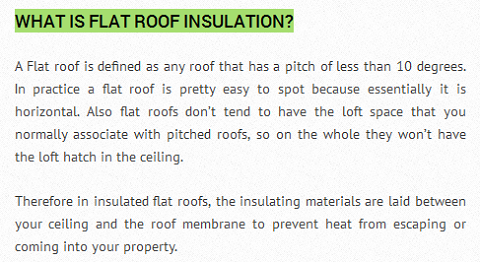Significance of Insulation for Flat Roofing in Surrey Home Extensions
Posted by: Brunwin Professional Roofing Services Ltd
Date Posted: November 20, 2014
According to the Royal Institute of Chartered Surveyors (RICS), more and more people are staying
longer in their homes, wherein they move an average of 14 and a half years less frequently, and are more inclined to extend their living space instead. If you're planning to invest in a home addition, say a garage, sunroom, or guest bedroom, you will most likely choose a flat roofing in Surrey for the new structure.

Flat roofs are commonly preferred for home extensions as they won't be obscuring the light that enters the house's existing windows. Basically, flat roofing is used whenever an extension is constructed directly on the side of the building. However, when it comes to the construction of a flat roofing in Croydon and other areas near Surrey, established roofers like Brunwin Professional Roofing Services Ltd. always remind clients about the importance of insulation.
Why opt to insulate?
As much as possible, try not to forego built-in insulation when you have a new roof installed. The money you save on utility bills, since less energy will be required to make your home comfortable, can pay off your initial investment. Roof insulation also helps maintain the ideal temperature levels within your residence.
Are there building regulations on flat roof insulation?
The following excerpt from an article posted at TheGreenage.co.uk answers the query above:
The current building regulations with respect to U values for flat roof insulation was updated in 2010, following on from the 2006 implemented changes to Building Regulations Approved Document L (Conservation of fuel and power). The current target U-value for new or replacement flat roofs should be 0.18W/m2K. This has been lowered over the years for two reasons, firstly more insulation means better heat retention and therefore lower bills and secondly to help meet the CO2 emission reduction EU directive.
What are the common methods of insulating flat roofs?
A flat roof could either be a warm or cold system. Warm flat roof insulation is when the wooden ‘deck’ of the roof is below the insulation, whereas a cold roof system is when the insulation is below the roof deck. A warm system is the more ideal way to insulate a flat roof because it can effectively prevent condensation issues. Meanwhile, a cold roof system is particularly chosen for home extensions that are meant solely for storage, and not as an additional living space.
(Source: Flat Roof Insulation, The GreenAge)
